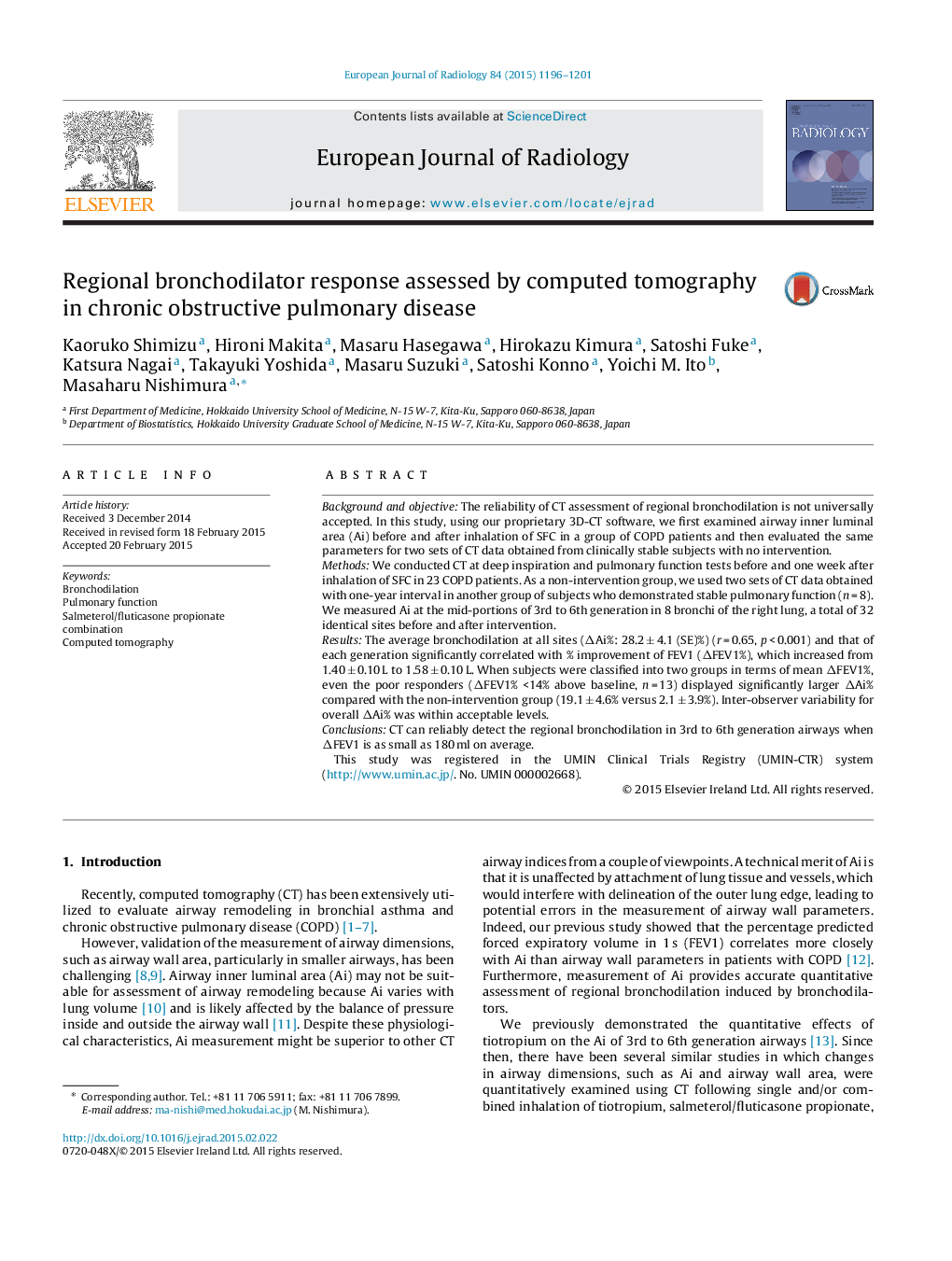| Article ID | Journal | Published Year | Pages | File Type |
|---|---|---|---|---|
| 4225122 | European Journal of Radiology | 2015 | 6 Pages |
Background and objectiveThe reliability of CT assessment of regional bronchodilation is not universally accepted. In this study, using our proprietary 3D-CT software, we first examined airway inner luminal area (Ai) before and after inhalation of SFC in a group of COPD patients and then evaluated the same parameters for two sets of CT data obtained from clinically stable subjects with no intervention.MethodsWe conducted CT at deep inspiration and pulmonary function tests before and one week after inhalation of SFC in 23 COPD patients. As a non-intervention group, we used two sets of CT data obtained with one-year interval in another group of subjects who demonstrated stable pulmonary function (n = 8). We measured Ai at the mid-portions of 3rd to 6th generation in 8 bronchi of the right lung, a total of 32 identical sites before and after intervention.ResultsThe average bronchodilation at all sites (ΔAi%: 28.2 ± 4.1 (SE)%) (r = 0.65, p < 0.001) and that of each generation significantly correlated with % improvement of FEV1 (ΔFEV1%), which increased from 1.40 ± 0.10 L to 1.58 ± 0.10 L. When subjects were classified into two groups in terms of mean ΔFEV1%, even the poor responders (ΔFEV1% <14% above baseline, n = 13) displayed significantly larger ΔAi% compared with the non-intervention group (19.1 ± 4.6% versus 2.1 ± 3.9%). Inter-observer variability for overall ΔAi% was within acceptable levels.ConclusionsCT can reliably detect the regional bronchodilation in 3rd to 6th generation airways when ΔFEV1 is as small as 180 ml on average.This study was registered in the UMIN Clinical Trials Registry (UMIN-CTR) system (http://www.umin.ac.jp/. No. UMIN 000002668).
